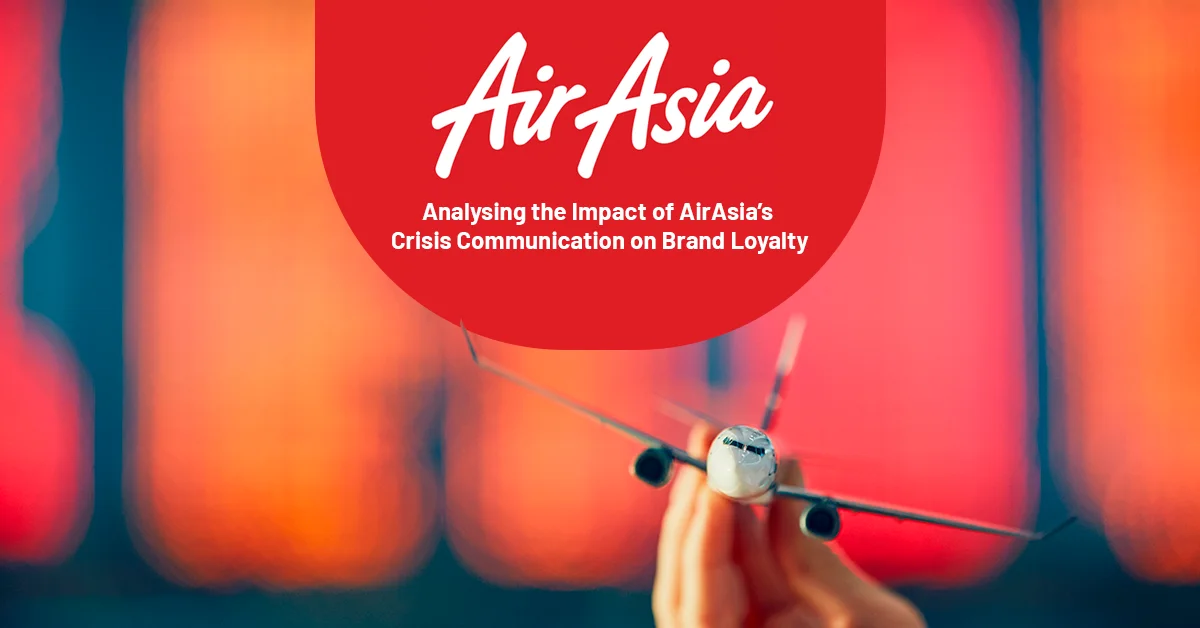
In today’s hyper-connected world, effective crisis communication is not just beneficial—it’s essential for maintaining brand loyalty and customer trust. AirAsia, a leading airline in the Asia-Pacific region, has exemplified how to manage crises through a sophisticated digital approach. This article delves into AirAsia’s strategic use of digital tools and platforms to navigate challenging times, focusing on how their communication methods during crises have directly influenced their brand loyalty and customer relationships.
We will explore the integral components of AirAsia’s crisis communication strategy, from the role of their website as a critical information hub to the dynamic use of social media for real-time engagement. Further, we analyse customer experiences and feedback to assess the tangible impact of these strategies on customer retention and brand perception. By examining specific case studies and comparing AirAsia’s practices with industry standards, this article aims to provide a comprehensive look at the effectiveness of digital crisis management in fostering enduring customer loyalty and trust.
Join us as we uncover the lessons from AirAsia’s approach to crisis communication, offering insights and recommendations that can benefit any organisation aiming to enhance its crisis management tactics in the digital age.

The Core Elements of AirAsia's Crisis Communication Strategy
AirAsia’s crisis communication strategy is built on rapid response, transparency, and the strategic use of digital platforms. Central to their approach is maintaining open lines of communication across multiple channels to ensure timely and accurate information dissemination. This strategy focuses on mitigating negative impacts through proactive engagement and carefully crafted messaging designed to maintain public trust and reassure stakeholders.
Embracing Digital Platforms
AirAsia leverages a variety of digital platforms to ensure effective crisis communication. During a crisis, the airline’s digital-first approach involves a rapid dissemination of information through its official website, which is updated in real-time with travel advisories, press releases, and FAQs. Social media channels like Twitter, Facebook, and Instagram are utilised not just for broadcasting updates, but also for engaging directly with customers. This includes responding to individual queries and concerns, which helps to personalise the communication and reduce panic.
The utility of these digital tools extends to mobile apps, where push notifications are used to alert passengers of important updates directly. Email and SMS communications are also critical, especially for reaching out to customers who might not be active on social media. Furthermore, AirAsia has invested in a robust backend system that allows for the segmentation of customer data, enabling them to send targeted messages to affected passengers, such as those on delayed flights or at specific destinations involved in a crisis.
Internally, digital dashboards provide real-time monitoring of the crisis and its impacts. This enables decision-makers to stay informed and adjust strategies as needed. The integration of these digital tools into AirAsia’s crisis management framework not only speeds up response times but also helps maintain a clear and consistent flow of information, essential for controlling the narrative and minimising misinformation.
Proactive vs. Reactive Communication
In its crisis communication, AirAsia emphasises a proactive approach. By addressing potential issues before they escalate, the airline manages to instil a sense of control and responsibility, crucial for maintaining public trust. This proactive strategy involves monitoring online sentiment and media outlets to anticipate concerns or questions that may arise, allowing the airline to prepare communications in advance.
In contrast, reactive communication is also strategically employed when immediate responses are required. This aspect of the strategy is about quickly addressing misinformation, providing updates as new information becomes available, and correcting any erroneous external communications about the crisis. Proactivity in planning and reactivity in implementation are balanced to ensure that communication is both anticipatory and adaptive, crucial for managing the dynamic nature of crises.
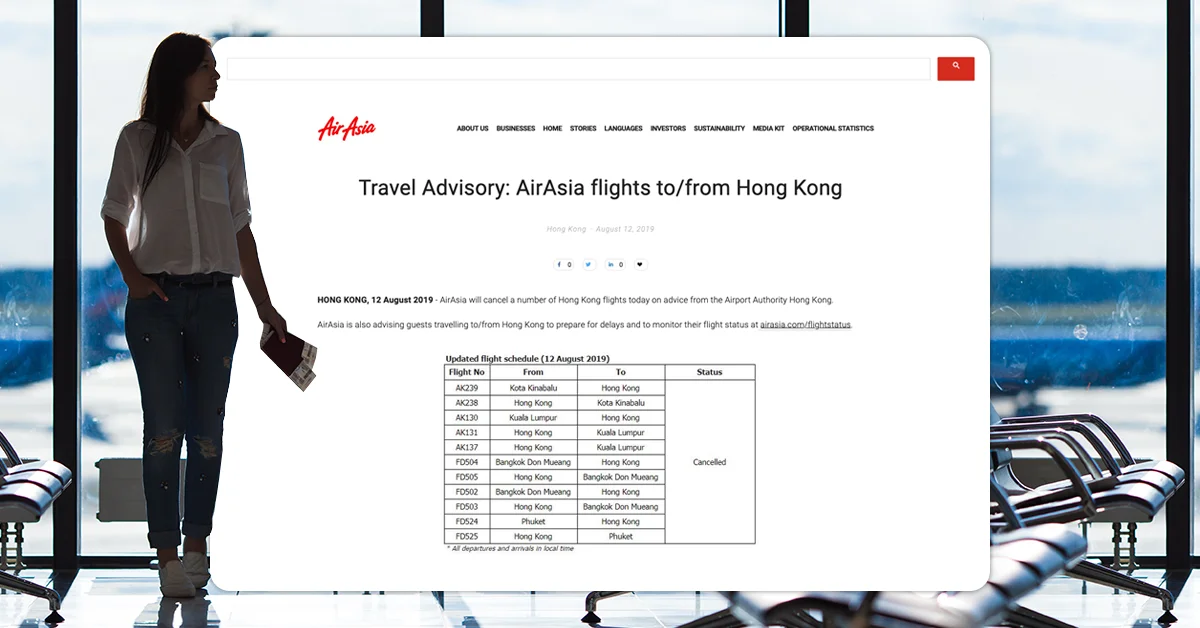
Impact of Effective Communication on Brand Loyalty During Crises
Effective communication during crises plays a pivotal role in strengthening brand loyalty. AirAsia’s commitment to transparency and timely updates reassures customers, thereby fostering a deeper sense of trust and reliability in the brand.
Building Trust Through Transparency
Transparency is a cornerstone of AirAsia’s crisis communication, significantly impacting brand loyalty. When a crisis hits, AirAsia’s approach involves openly sharing what is known, what is not known, and the steps being taken to resolve the issue. This openness is crucial for building trust. Customers feel respected and valued when they are not kept in the dark, leading to increased loyalty.
In practical terms, this means providing regular updates even if the news is not entirely positive. For example, during a flight delay or operational disruption, AirAsia informs passengers about the cause of the problem, expected time of resolution, and any steps the customer needs to take. Such transparency is communicated through multiple channels to ensure the message reaches as wide an audience as possible.
Moreover, transparency is not just about disseminating information but also about admitting faults when necessary. If a crisis occurs due to an error on AirAsia’s part, the company openly acknowledges the mistake and outlines the measures being taken to prevent future occurrences. This honest approach not only mitigates frustration and potential backlash but also enhances customers’ perceptions of the airline as a trustworthy and responsible operator.
Consistency Across Messages
Maintaining consistency in messaging across all communication channels is critical during a crisis. Inconsistent messages can lead to confusion and mistrust, undermining efforts to manage the situation effectively. AirAsia ensures that all communications, whether through social media, the website, press releases, or direct customer interactions, are aligned in tone and content.
This consistency is achieved through a centralised communication strategy where key messages and updates are vetted by a crisis management team before being disseminated. Regular training and clear guidelines help everyone involved in crisis communication to understand the core messages and the appropriate language to use. This alignment helps reinforce a unified image of the airline, contributing to a cohesive brand identity that customers recognize and trust, which is essential during and after a crisis.
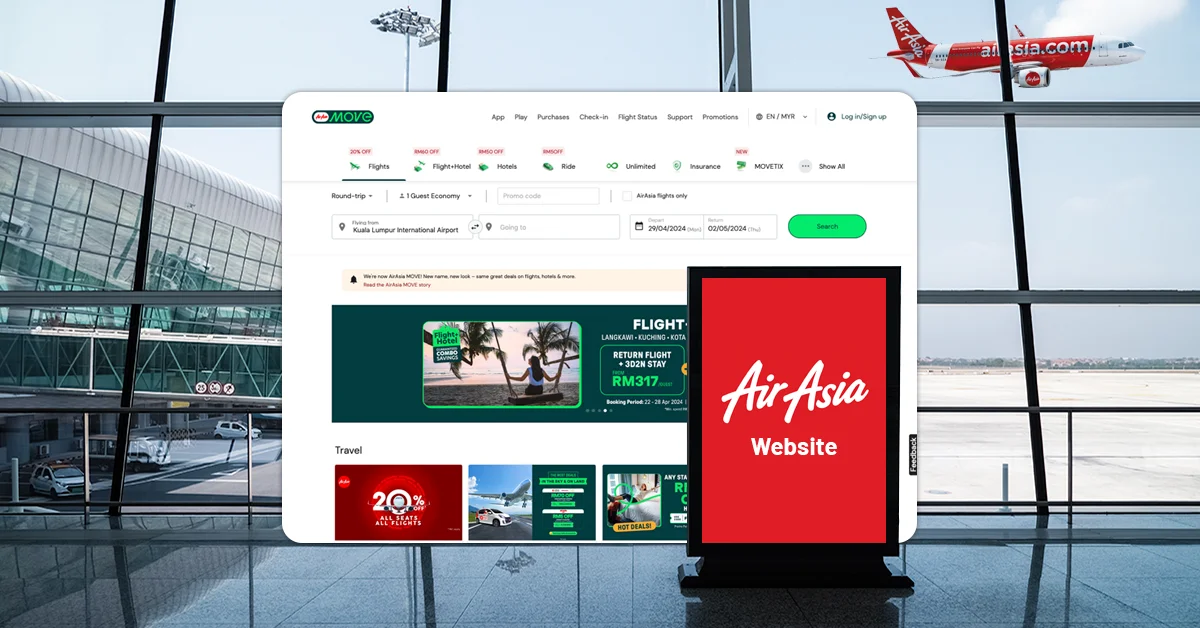
Role of AirAsia's Website in Crisis Management
AirAsia’s website serves as the cornerstone of its crisis management framework, acting as a comprehensive hub for all crisis-related information. The site is strategically utilised to provide immediate, accessible updates and resources, ensuring passengers receive accurate information directly from the source.
Information Dissemination Hub
During a crisis, AirAsia’s website transforms into a vital information dissemination hub. It hosts a dedicated crisis page that features real-time updates, travel advisories, and detailed FAQs. This page is designed to be the first point of contact for concerned passengers seeking reliable information, reducing the spread of rumours and misinformation.
The website’s structure is optimised for heavy traffic during crises, ensuring accessibility even with high visitor volumes. Accessibility features, such as easy-to-read fonts and language options, make the information approachable for a diverse audience. Moreover, the website integrates interactive tools like live chat and status-check features, allowing passengers to receive personalised information about their travel plans quickly.
To enhance user experience during stressful times, AirAsia’s website also includes clear navigation to relevant sections such as rebooking or refund procedures, contact information, and links to official statements. Additionally, backend integration with customer databases allows for the sending of personalised alerts to affected passengers via email or SMS, directing them to the website for more detailed information.
In ensuring that all content on the crisis page is clear, concise, and jargon-free, AirAsia helps users easily understand their situation and what steps they need to take next. This approach not only alleviates customer anxiety during a crisis but also reinforces the airline’s reputation as a dependable and customer-centric brand.
Features that Enhance User Experience During Crises
To further enhance the user experience during crises, AirAsia’s website includes several technical features. One of the main features is the responsive design of the website, which ensures that it functions effectively across all devices—be it smartphones, tablets, or desktops. This responsiveness is crucial during crises when passengers might only have access to their mobile phones.
Another significant feature is the integration of real-time notifications. These notifications are designed to alert users about updates related to their specific flights or general crisis developments directly on the website without requiring them to refresh the page continuously.
AirAsia also incorporates AI-driven chatbots on their website, providing instant responses to common queries. This technology helps manage the high volume of inquiries during a crisis, ensuring that all passengers receive timely support. The chatbot is programmed to escalate complex issues to human representatives, combining efficiency with personal touch.
Additionally, the website uses geo-targeting technology to display relevant content based on the user’s location. This means that passengers are shown information and updates specific to their region or affected travel routes, making the communication more relevant and practical.
These technical enhancements not only improve the functionality of the website during crises but also significantly contribute to a smoother and more reassuring user experience, ultimately impacting customer satisfaction and loyalty positively.

Social Media's Pivotal Role in Crisis Scenarios
In today’s digital age, social media is a critical component of crisis management strategies. For AirAsia, social media platforms are vital for real-time communication and engagement with passengers and the broader public during crises.
Real-Time Updates and Engagement
AirAsia utilises its social media platforms to provide real-time updates and actively engage with its customer base during crises. Platforms such as Twitter, Facebook, and Instagram are used to quickly disseminate information regarding flight changes, safety measures, and responses to customer inquiries. The immediacy of social media allows AirAsia to reach a broad audience quickly and effectively, which is crucial for managing information flow and public perception during emergencies.
These platforms also enable two-way communication between AirAsia and its passengers. Customers can report issues, ask questions, and provide feedback directly through comments or private messages. AirAsia’s social media team is trained to respond promptly, providing personalised assistance and acknowledging concerns publicly, which helps to maintain transparency and build trust.
Live updates are critical during a crisis, and AirAsia leverages features like Twitter’s live-tweeting and Facebook’s real-time status updates to keep passengers informed. These updates often include links to more detailed content on AirAsia’s official website, ensuring that customers have access to comprehensive resources.
Moreover, social media serves as a listening tool for AirAsia. By monitoring conversations and sentiments expressed online, the airline can gauge public reaction, identify common concerns, and adjust their crisis response strategy accordingly. This real-time feedback loop is invaluable for managing crises dynamically and effectively.
Customer Interaction and Feedback Loop
AirAsia’s social media platforms not only serve as a channel for broadcasting information but also as an interactive space where customers can engage with the brand and each other. This interaction is facilitated by a dedicated team that monitors social media around the clock, ensuring that all queries are addressed.
During a crisis, this team ramps up its efforts to handle the increased volume of interactions. They focus on maintaining a polite and empathetic tone, understanding that customers might be stressed or upset. Quick, accurate responses are prioritised to reduce misinformation and prevent customer dissatisfaction from escalating.
The feedback loop created through these interactions is crucial for continuous improvement. By analysing the types of questions and complaints received, AirAsia can identify areas where additional information might be needed or where their crisis response could be improved. This analysis leads to better-preparedness in future scenarios.
Furthermore, engaging with customers on social media during a crisis helps humanise the brand. By showing care and concern through personalised responses, AirAsia strengthens its relationships with customers, which is essential for sustaining brand loyalty long after the crisis has subsided.
In summary, AirAsia’s strategic use of social media during crises not only enhances communication efficiency and responsiveness but also plays a significant role in shaping the airline’s public image and customer relationships during challenging times.

Analysing Customer Experience During Crisis
Understanding customer experience during a crisis is crucial for AirAsia to assess and refine their crisis management strategy. This section delves into how passengers perceive and react to AirAsia’s crisis communications and the direct effects these perceptions have on their overall satisfaction and loyalty.
Case Studies of Customer Interactions
To gain a deeper understanding of customer experiences during crises, analysing specific case studies of AirAsia’s interactions provides valuable insights. These case studies include instances where the airline faced significant operational challenges, such as natural disasters, technical failures, or global health emergencies. Each case study is selected based on its impact and the extent of communication between AirAsia and its customers during the event.
In these analyses, the focus is on how information was conveyed to the passengers, the responsiveness of AirAsia’s customer service teams, and the effectiveness of the solutions provided. For instance, during a volcanic eruption that disrupted numerous flights, AirAsia’s immediate response included timely updates through various channels, rebooking assistance, and extended customer service hours, which were crucial for mitigating passenger inconvenience and distress.
Feedback collected via surveys, social media monitoring, and direct customer communications are reviewed to assess the sentiment and satisfaction levels among affected passengers. The findings often reveal the importance of prompt, clear, and empathetic communication in maintaining customer trust during uncertain times. Additionally, these case studies highlight how well the airline’s preparedness and technological investments played out in real scenarios, offering lessons on what strategies were most effective and what areas might require improvements.
These detailed case studies serve not only as a testament to AirAsia’s commitment to customer care during crises but also as a framework for continuous improvement in crisis management tactics.
Surveys and Feedback Analysis
Surveys and feedback mechanisms are integral to understanding and enhancing the customer experience during crises. Following a crisis, AirAsia deploys targeted surveys to affected passengers to gather detailed feedback on their experiences. These surveys are designed to measure the adequacy of the communication received, the effectiveness of the solutions offered, and the overall satisfaction with the airline’s handling of the situation.
The analysis of this feedback allows AirAsia to identify common themes and areas of concern. For instance, if multiple passengers report confusion over rebooking procedures, this could indicate a need for clearer communication in this area. Similarly, positive feedback on certain aspects, such as the speed of response on social media platforms, can reinforce the importance of maintaining these strengths.
Additionally, AirAsia uses advanced analytics to segment feedback and identify trends based on different crises, passenger demographics, and other relevant factors. This segmentation helps tailor future communications and improve specific aspects of the crisis management process, ensuring that strategies are both effective and personalised.
The insights gained from these surveys are shared across departments to foster an integrated approach to continuous improvement. By systematically analysing and acting on customer feedback, AirAsia not only enhances its crisis management strategies but also demonstrates a commitment to listening and responding to its passengers, thereby strengthening brand loyalty.

Techniques Used by AirAsia to Maintain Customer Relations Post-Crisis
Post-crisis, maintaining customer relations is critical for AirAsia to ensure ongoing loyalty and trust. This section explores the techniques employed by the airline to repair and enhance relationships with passengers once a crisis has been resolved.
Follow-Up Communications
Effective follow-up communications are vital for AirAsia to ensure that customer relations are maintained and strengthened after a crisis. AirAsia implements a structured follow-up strategy that includes personalised emails and messages to affected passengers, providing updates on resolutions and ongoing efforts to prevent future incidents.
These communications often include expressions of gratitude for the patience and understanding shown by passengers, as well as apologies for any inconveniences caused. Furthermore, AirAsia may offer compensation, such as discounts on future bookings or added loyalty points, as a gesture of goodwill and an incentive for continued patronage.
Additionally, follow-up communications serve to inform passengers about what has been learned from the crisis and the specific steps AirAsia is taking to enhance processes. This transparency helps to rebuild trust and demonstrates the airline’s commitment to improvement.
The timing of these communications is carefully planned to strike a balance between providing enough space for immediate recovery and maintaining engagement. This approach ensures that customers feel valued and understood, which is crucial for retaining their loyalty and trust in the long term.
Loyalty Programs and Incentives
After a crisis, AirAsia strategically utilises its loyalty programs and incentives to re-engage customers and solidify their loyalty. These initiatives are designed to acknowledge the inconvenience faced by passengers and to compensate them in ways that encourage future engagements with the airline.
For example, AirAsia may offer bonus loyalty points or vouchers for flight discounts, which serve as an immediate reward for those affected by the crisis. Such gestures not only provide tangible benefits to passengers but also create a positive association with the brand, helping to mitigate any negative feelings stemming from the crisis.
The airline also reviews its loyalty program rules to consider exceptions for maintaining status levels or extending points that might expire, understanding that passengers may have been unable to travel as planned due to the crisis. This flexibility in policy shows a customer-centric approach, which is appreciated by frequent flyers and helps in strengthening their loyalty.
Implementing these techniques not only aids in the immediate recovery of customer relations but also contributes to long-term loyalty. By actively engaging with passengers post-crisis and offering tangible benefits, AirAsia effectively demonstrates its commitment to customer satisfaction and retention.

Measuring the Impact of Crisis Communication on Customer Retention
Evaluating the effectiveness of crisis communication is essential for AirAsia to understand its impact on customer retention. This section explores the methodologies and metrics used to measure how well the airline maintains its customer base during and after crises.
Before and After Crisis Metrics
To quantify the effectiveness of its crisis communication, AirAsia analyses customer retention metrics before and after crises. This involves tracking data such as repeat bookings, cancellation rates, and customer loyalty program activities. For example, an analysis might reveal a spike in cancellations during a crisis, followed by a recovery phase where effective communication and remedial actions help to restore customer confidence and bookings.
The airline utilises advanced data analytics to delve deeper into these trends, examining variables such as the timing of communications, the specificity of the information provided, and the channels used. These insights allow AirAsia to refine their communication strategies to better meet customer needs and expectations during future crises.
Additionally, AirAsia pays close attention to customer feedback during this period through surveys and social media monitoring. This feedback is invaluable for understanding the customer’s perspective on how well the airline communicated during the crisis. Positive feedback and an uptick in repeat bookings post-crisis can indicate successful communication, whereas negative feedback might highlight areas for improvement.
This methodical approach to measuring the impact of crisis communication helps AirAsia not only to retain customers but also to continually enhance their strategies to ensure greater effectiveness in future scenarios.
Long-Term Brand Loyalty Trends
Long-term brand loyalty is a crucial metric for assessing the sustained impact of crisis communication. AirAsia examines trends in customer loyalty over extended periods, focusing on the loyalty program engagement and customer lifetime value as indicators of sustained trust and commitment to the brand.
The analysis involves comparing long-term loyalty metrics from periods following a crisis to similar periods without crisis impacts. Significant findings from this analysis include identifying whether customers continue to engage with the brand at the same or increased levels, which would suggest effective crisis management.
Moreover, the airline considers the role of communication in fostering a sense of community and belonging among its customers, which can be a powerful driver of brand loyalty. Programs designed to reward customers for their loyalty, especially those tailored to acknowledge and compensate for inconveniences during crises, are evaluated for their effectiveness in maintaining the customer base.
This comprehensive approach not only helps AirAsia understand the direct impacts of their communication on customer retention but also aids in crafting strategies that contribute to long-term customer loyalty and trust.

The Integration of Customer Service with Crisis Communication
Integrating customer service with crisis communication is pivotal for AirAsia, ensuring that customer needs are met efficiently and empathetically during crises. This section discusses how the airline coordinates these functions to enhance customer support and satisfaction.
Training and Preparedness
Effective integration of customer service and crisis communication at AirAsia begins with comprehensive training and preparedness. All customer service representatives undergo regular training that includes crisis communication protocols, scenario-based exercises, and updates on the latest communication tools and strategies.
This training ensures that every team member understands their role in a crisis, including how to access real-time information, communicate it effectively, and handle increased volumes of customer queries. The airline uses simulations and drills to prepare the team for various crisis scenarios, improving their ability to respond swiftly and accurately under pressure.
Moreover, AirAsia emphasises the importance of empathy in customer interactions, particularly during crises. Training programs therefore also focus on emotional intelligence, teaching staff how to recognize and respond to customer distress in a manner that fosters trust and reassurance.
This thorough preparation not only enhances the efficiency of crisis responses but also ensures that customer service representatives are equipped to handle the emotional and informational needs of passengers during stressful times.
Technology and Human Touch
Balancing technology and human touch in crisis communication is critical for AirAsia. The airline employs state-of-the-art technology to manage communications and customer interactions efficiently. This includes CRM systems that provide a 360-degree view of the customer, allowing representatives to offer personalised assistance, and AI-driven chatbots that handle routine inquiries, freeing up human agents for more complex issues.
Despite the reliance on technology, AirAsia recognizes the irreplaceable value of human interaction, especially in crisis situations where customers may need reassurance from a real person. To this end, the airline ensures that technology is used to enhance, not replace, human interactions. For instance, chatbots are programmed to escalate more sensitive matters to human agents.
Furthermore, the integration of these technologies into the customer service framework is designed to provide a seamless experience. Information flows smoothly between the crisis management team and customer service representatives, ensuring that all communication is consistent, accurate, and timely.
This strategic integration of technology and human empathy enables AirAsia to deliver superior customer service during crises, enhancing customer satisfaction and loyalty through personalised and compassionate engagement.
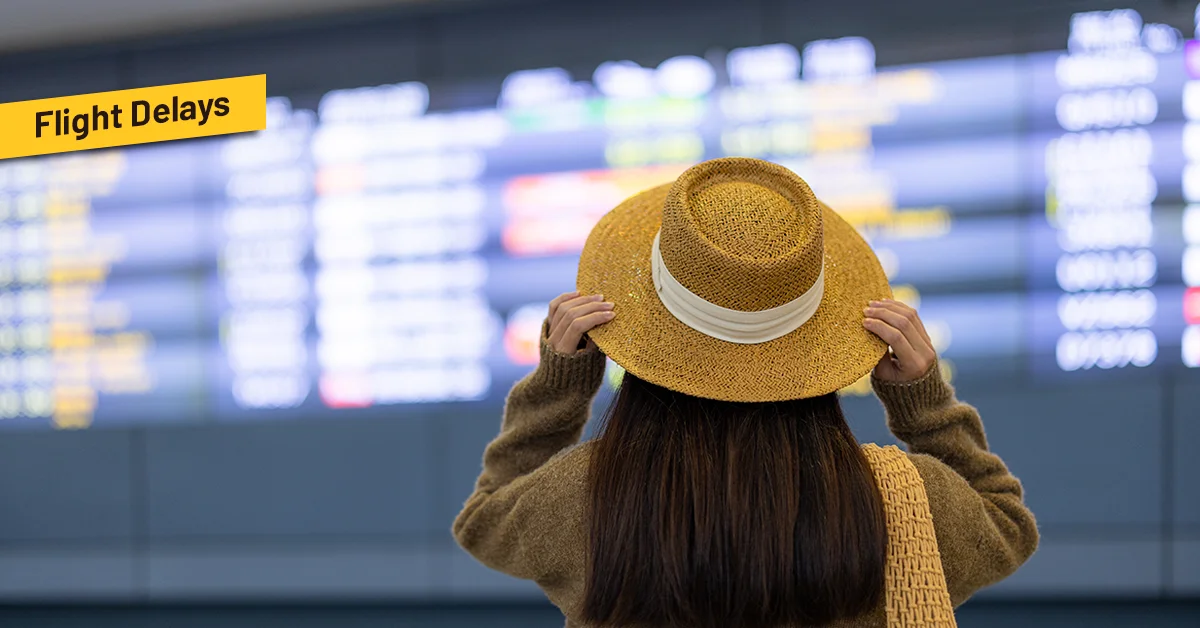
Case Example: AirAsia’s Handling of Specific Crisis Events
This section examines specific instances where AirAsia faced significant crises and showcases their strategic response to each. By focusing on real-world applications, we can better understand the effectiveness of AirAsia’s crisis management tactics.
Incident Details
One notable crisis event involves a technical failure that led to significant delays across several flights. This case study begins with a detailed account of the incident, including the initial detection of a technical glitch affecting the airline’s booking and scheduling systems. The disruption caused immediate confusion and frustration among passengers scheduled to travel within the next 24 hours.
As part of the case study, the sequence of events is meticulously outlined. This includes the initial signs of the system failure, the immediate actions taken by technical teams to address the problem, and the communication flow from AirAsia to its passengers and the public. The analysis also covers the measures taken to mitigate passenger inconvenience, such as offering rebooking options, issuing refunds, and providing accommodations for those stranded due to delayed flights.
This detailed breakdown helps illustrate how AirAsia’s crisis communication protocols were activated. The case study emphasises the importance of quick, transparent, and consistent communication in maintaining customer trust during such disruptions. By dissecting how the situation was handled, insights can be gleaned on the efficiency of response strategies and the effectiveness of the communication channels used.
Response Strategy and Outcome
Following the incident details, this section delves into AirAsia’s response strategy to the technical failure. Key focus areas include the immediacy of their communications, the clarity and accuracy of the information provided, and the channels through which updates were disseminated to reach a broad audience effectively.
The airline’s response involved multiple stages, beginning with immediate internal communications to ensure all staff were informed and prepared to handle inquiries. Public updates were then issued via social media, the AirAsia website, and direct communications through email and SMS to affected passengers. Each message aimed to inform passengers of the issue, what was being done to resolve it, and how they would be assisted during the disruption.
The outcome of the crisis is analysed in terms of customer feedback and post-crisis evaluations. Positive outcomes noted include effective damage control in customer relations and enhanced procedures to prevent similar future crises. The company’s ability to learn from this event and its transparent communication approach helped preserve and even strengthen customer loyalty despite the initial setbacks.

Comparing AirAsia with Competitors in Crisis Communication
This section provides a comparative analysis of AirAsia’s crisis communication strategies against those of its competitors. Such comparisons highlight areas of strength and potential improvement for AirAsia.
Industry Benchmarks
To evaluate AirAsia’s performance during crises, it is juxtaposed against leading competitors who have faced similar challenges. This comparison uses industry benchmarks such as response time, communication clarity, customer satisfaction scores, and overall impact on brand reputation. Metrics are gathered from publicly available data, industry reports, and customer feedback forums.
The analysis also considers how competitors manage communication across different platforms, including social media, traditional media, and direct customer interactions. Special attention is paid to the innovations and technologies adopted by these competitors, evaluating whether AirAsia is ahead or behind industry standards in certain areas.
This benchmarking not only provides a clear picture of where AirAsia stands in terms of crisis management but also offers actionable insights into what works well in the industry and what might be improved upon. By understanding the strategies employed by others in similar situations, AirAsia can refine its approach to ensure it remains competitive and effective in handling future crises.
Areas Where AirAsia Leads or Lags
Within the comparative framework, specific areas where AirAsia excels or falls short in crisis communication are identified. For instance, AirAsia might lead in the immediacy and transparency of their communication but lag in the personalization of responses compared to competitors who utilise more advanced CRM systems for tailored communications.
This section also explores how different airlines have handled similar crises and what can be learned from each. It might highlight a competitor’s innovative use of a new digital tool or a particularly effective customer engagement strategy during a crisis. Conversely, it could pinpoint where AirAsia has set a benchmark that others strive to meet.
Overall, this analysis not only positions AirAsia within the competitive landscape but also sets the stage for continuous improvement in their crisis communication strategies by learning from both their successes and shortcomings.
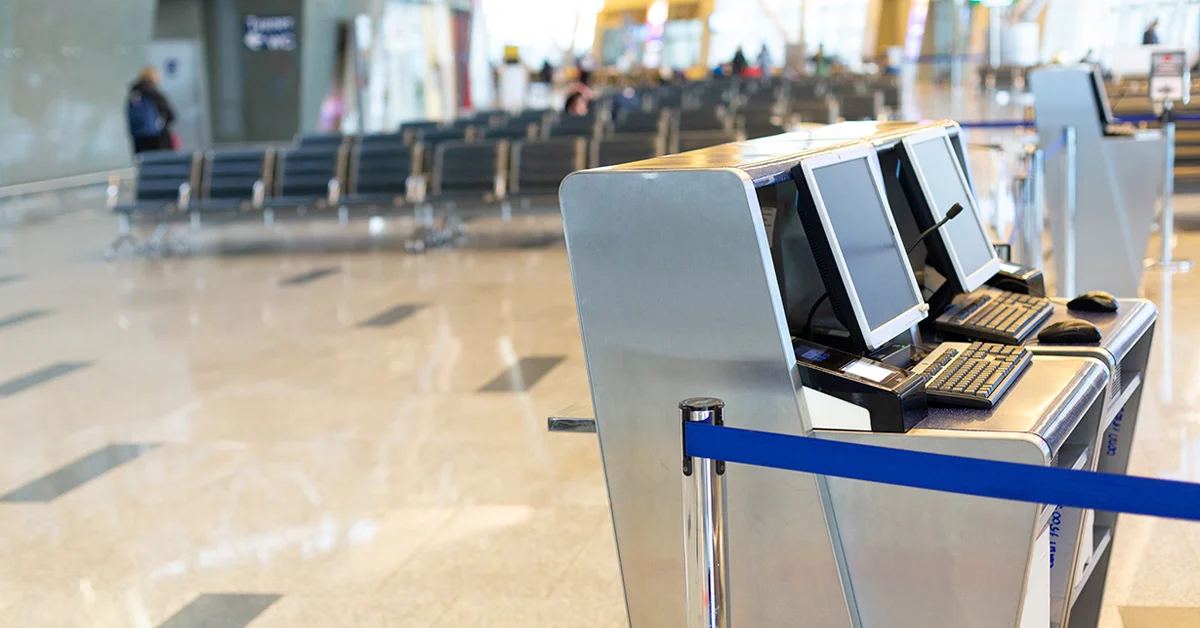
The Future of Crisis Communication in the Digital Age
The landscape of crisis communication is rapidly evolving with digital innovations. This section explores how emerging technologies and shifting consumer expectations are shaping the future strategies of organisations like AirAsia.
Emerging Technologies and Trends
The advancement of technology continually reshapes how companies manage crisis communication. For AirAsia, incorporating new digital tools such as AI for predictive analytics, blockchain for securing communication, and virtual reality for crisis simulation training could enhance responsiveness and efficiency. These technologies allow for quicker detection of potential crises, more targeted communication, and better-prepared staff.
Artificial Intelligence (AI) plays a critical role by analysing data to predict potential issues before they escalate into a full-blown crisis. This predictive capability enables proactive management, allowing AirAsia to mitigate risks or prepare communication strategies in advance. Furthermore, AI-driven chatbots and automated systems can provide immediate responses to customer inquiries during a crisis, ensuring that accurate information is delivered without delay.
Blockchain technology could revolutionise crisis communication by creating unalterable audit trails for communication. This ensures transparency and trust, as messages cannot be tampered with once entered into the blockchain. This technology could be particularly useful in maintaining the integrity of communication between AirAsia and its stakeholders.
Additionally, Virtual Reality (VR) and Augmented Reality (AR) can be used for training purposes, providing realistic simulations of crisis scenarios for staff training. This hands-on experience is invaluable, as it prepares staff to handle real-world crises more effectively by allowing them to practise their response in a controlled but immersive environment.
These technologies, combined with increasing digital connectivity, suggest that the future of crisis communication will be more integrated, automated, and sophisticated, offering opportunities to enhance the speed and accuracy of responses in crisis situations.
Predictions Based on Current Practices
Based on current practices, it is anticipated that crisis communication will become increasingly personalised and instantaneous. As AirAsia and other companies collect more data on their customers, communication can be tailored to individual needs and situations during a crisis, enhancing the customer experience and effectiveness of the response.
Furthermore, the integration of social media strategies will continue to evolve. Platforms like Twitter, Facebook, and Instagram will likely remain crucial for real-time updates, but newer platforms and features, such as live streaming or direct messaging, may become more important. These tools will enable organisations to not only broadcast updates but also engage in two-way communications with their audience directly.
Overall, the trend is moving towards a more connected, responsive, and technologically integrated approach to crisis communication. As digital technologies advance, so too will the strategies organisations use to manage and communicate during crises.
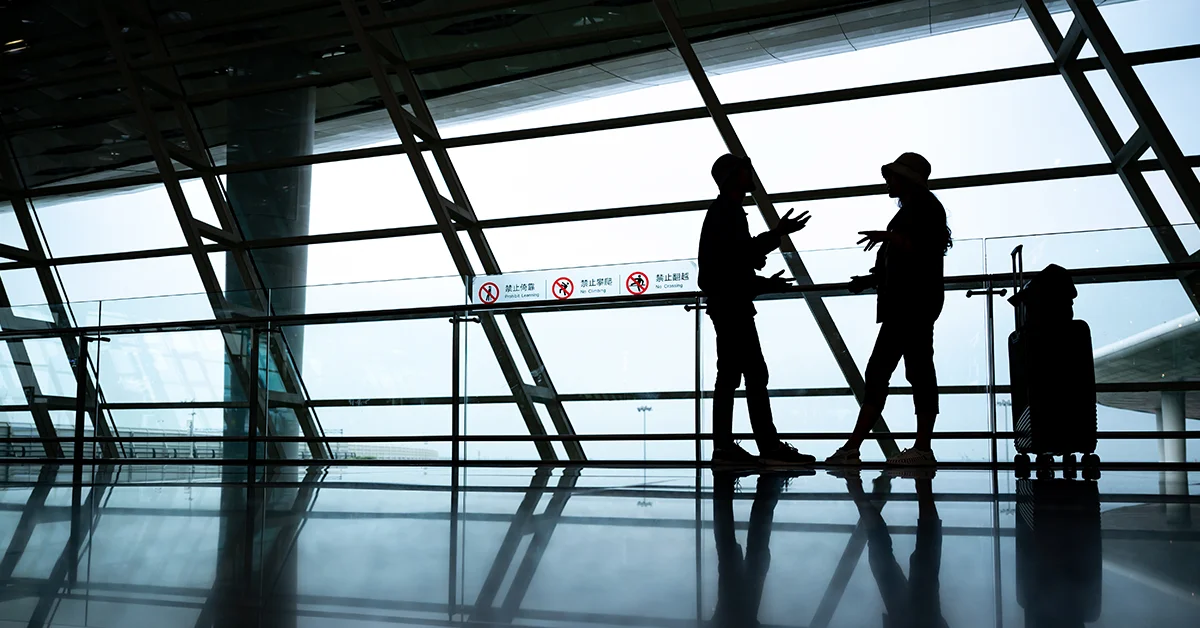
Lessons Learned and Recommendations for Improving Crisis Communication
Reflecting on past experiences and adjusting future strategies is essential for enhancing crisis communication. This section outlines key takeaways from AirAsia’s past crisis handling and provides recommendations for further improvement.
Key Takeaways from AirAsia’s Approach
AirAsia’s handling of various crises has yielded several important lessons. First, the value of prompt and transparent communication cannot be overstated. Quick dissemination of accurate information helps to manage public expectations and maintain trust. Second, the importance of a multichannel communication strategy has been underscored, demonstrating that utilising a combination of direct messages, social media, and traditional media reaches a wider audience more effectively.
Another significant lesson is the necessity of having a well-prepared crisis response team. Teams that are regularly trained and familiar with crisis protocols can manage more efficiently and confidently, which is crucial in high-pressure situations.
Lastly, the feedback loop from customers following a crisis is invaluable. It provides direct insights into what worked well and what did not, informing continuous improvement in crisis management strategies.
Strategies for Other Companies
Based on AirAsia’s experiences, other companies can improve their crisis communication by first ensuring that they have a clear, predefined crisis communication plan. This plan should include identified spokespersons, pre-approved messages for various scenarios, and a clear outline of communication channels to be used.
Regular training and simulations should be conducted to ensure that all team members understand their roles during a crisis. This training should be comprehensive, covering not only procedural aspects but also soft skills like customer empathy and effective communication techniques.
Additionally, investing in technology to automate and facilitate quick communication can be beneficial. Tools that allow for real-time monitoring and analytics can help in making informed decisions quickly.
Lastly, fostering a culture of transparency within the organisation can help in maintaining public trust. When customers see that a company consistently communicates openly and honestly, they are more likely to remain loyal even during challenging times.
By adopting these strategies, companies can not only enhance their ability to communicate during crises but also strengthen their overall brand resilience.




